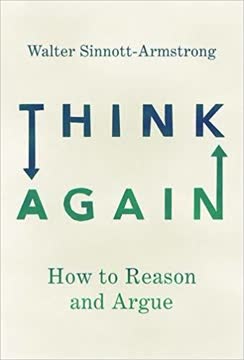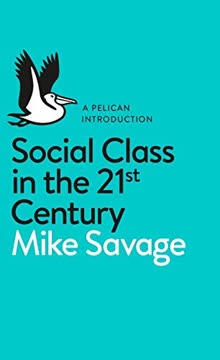Key Takeaways
1. Polarization is a pervasive and destructive cultural rut.
These attitudes undermine respect, connection, and cooperation.
Global crisis. Our world faces immense challenges—war, poverty, climate change, social injustice—that demand widespread cooperation. Yet, instead of working together, diverse groups with conflicting beliefs and values are increasingly polarized, leading to gridlock and a failure to address critical issues. This isn't just a political problem; it permeates personal lives, affecting friendships, family relationships, and community cohesion.
Defining polarization. Polarization is a complex syndrome encompassing several dimensions. It includes:
- Distance: Groups' views are far apart on relevant scales.
- Homogeneity: Members within each group hold very similar views.
- Antagonism: Groups feel hatred, disdain, or fear towards opponents.
- Incivility: Negative and abusive talk about the other side.
- Rigidity: Unwillingness to compromise on "sacred" values.
- Gridlock: Inability to cooperate and achieve common goals.
This multifaceted problem is evident in the US and globally, from Brexit to the migrant crisis, often fueled by perceived, rather than actual, ideological divides.
Toxic discourse. A major driver of this polarization is "toxic talk." Instead of civil discourse, we see interruptions, caricatures, insults, and threats. This incivility, while sometimes effective for gaining attention or building group solidarity, ultimately prevents mutual understanding and empathy. It scares away moderate voices and leaves little incentive for fair, factual, or thoughtful engagement, leading to a downward spiral of disrespect and contempt.
2. Arguments are essential for understanding, respect, and progress.
That mutual understanding is what helps us work together.
Beyond winning. Many view arguments as verbal fights or competitions, aiming to "win" or "beat" opponents. However, this perspective is limited and counterproductive. True arguments, in the sense of presenting reasons, are tools for increasing understanding—helping others grasp why you believe something, and why something happens, even if minds aren't changed. This shared understanding is the foundation for cooperation.
Fostering virtues. Engaging in reasoned argument expresses respect for your audience, acknowledging their capacity to understand and respond to reasons. It also cultivates humility, as encountering well-reasoned opposing views can reveal the limits of one's own knowledge and the validity of alternative perspectives. This humility is crucial for moving beyond overconfidence and rigid stances.
Path to compromise. Arguments facilitate compromise by clarifying underlying reasons and values. When both sides articulate their "why," they can identify shared concerns or find intermediate positions that address diverse needs. This process, though challenging, is necessary for progress, especially on complex issues where absolute solutions are rare. Arguments, therefore, are not just about intellectual exchange but about building bridges for collective action.
3. We are often poor reasoners, but we can improve our skills.
We are not as good at reasoning as we would like to think.
Cognitive biases. Despite our intelligence, humans are prone to systematic errors in reasoning. Psychological studies reveal tendencies like:
- Wishful thinking: Believing an argument is valid because we want its conclusion to be true (e.g., sports fans).
- Desirability bias: Seeking information that supports desired outcomes (e.g., stepping on a scale multiple times).
- Representativeness heuristic: Over-relying on stereotypes or typical examples, neglecting baseline probabilities (e.g., judging a student's field of study).
These biases often lead us astray, even in simple logical tasks like the Wason selection task.
The Wason task. This classic experiment demonstrates how context affects our reasoning ability. Participants struggle to identify necessary cards to test a rule in abstract scenarios (e.g., "If a card has B on one side, it has 2 on the other"). However, performance dramatically improves when the task is framed in a practical, social context (e.g., checking if people are breaking a drinking age law). This suggests our reasoning is often better when applied to real-world problems.
Capacity for improvement. The good news is that our reasoning skills are not fixed. We can improve through training, practice, and by fostering a desire for truth and understanding. Group deliberation, where individuals evaluate arguments rather than just producing them, also significantly enhances reasoning quality. By recognizing our inherent flaws and creating environments that encourage critical thinking and error correction, we can become more effective arguers and reasoners.
4. Arguments are structured reasons, not mere fights or assertions.
An argument is a connected series of premises intended to present a reason for a conclusion.
Beyond abuse and contradiction. Arguments are distinct from mere abuse, physical fights, or simple contradiction. Calling someone names or simply saying "No" to their claim does not constitute an argument because it offers no reason or evidence. An argument requires a structured presentation of claims, where some claims (premises) are offered as reasons for another claim (conclusion).
Purpose of arguments. Arguments serve various purposes beyond just winning a debate. They can:
- Justify beliefs: Provide evidence to convince an audience that a conclusion is true.
- Justify actions: Offer reasons for why a particular course of action should be taken.
- Explain phenomena: Clarify why something happened, even if the audience already believes it occurred (e.g., explaining an eclipse).
This broad understanding highlights arguments as tools for deeper understanding, not just persuasion.
Identifying arguments. Speakers often use specific "argument markers" to signal premises or conclusions. Words like "so," "therefore," "thus," "hence" typically introduce conclusions, while "because," "since," "for" often introduce premises. However, these markers aren't foolproof; context is key. Sometimes, arguments are implied rather than explicitly stated, requiring careful interpretation to uncover the underlying reasoning.
5. Mastering argument language helps identify and complete arguments.
The purpose of all such guarding terms is to make premises less vulnerable to objections and thereby to turn bad arguments into better arguments and to stop the regress of reasons.
Stopping the regress. Every premise in an argument could theoretically require its own justification, leading to an infinite regress. In practice, we use "regress stoppers" to make arguments manageable and effective for specific audiences. These linguistic tools help manage objections and clarify the arguer's intent.
Four types of regress stoppers:
- Guarding terms: Weaken claims to make them less vulnerable to refutation (e.g., "many," "most," "possibly," "might"). This avoids overstating a premise, making it easier to defend, though care must be taken not to weaken it too much.
- Assuring terms: Suggest that there is a reason for a claim without explicitly stating it (e.g., "surely," "obviously," "certainly," "as a matter of fact"). These work in contexts of trust but can be misused to avoid scrutiny or hide dubious sources.
- Evaluating terms: Use words that imply standards (e.g., "good," "bad," "dangerous," "safe"). These terms can stop arguments by appealing to shared values or standards, even if those standards are not explicitly defined.
- Discounting terms: Anticipate and defuse objections by acknowledging a counterpoint but then downplaying its importance (e.g., "but," "although," "however"). These terms reveal the arguer's priorities and can bring competing considerations to light.
Argument reconstruction. "Deep analysis" involves identifying explicit premises and conclusions, then inserting "suppressed premises" that are unstated but necessary to make the argument valid and sound. This process, called argument reconstruction, aims to make the argument as strong and clear as possible, not to make the arguer look foolish. It helps uncover hidden assumptions and clarifies the true strength of the reasoning.
6. Sound arguments require both validity and true premises.
A sound argument is defined as an argument that both is valid and also has all true premises.
Validity: The logical link. An argument is "valid" if and only if it's impossible for all its premises to be true while its conclusion is false. Validity is about the structure of the argument, not the actual truth of its statements. A valid argument can have false premises and a false conclusion, or true premises and a true conclusion. The key is the necessary connection: if the premises were true, the conclusion would have to be true.
Soundness: The gold standard. For an argument to be truly "good" or epistemically valuable, it must be "sound." A sound argument is one that is both valid and has all true premises. This guarantees that a sound argument will always have a true conclusion, making it a powerful tool for establishing truth and justification.
Deduction vs. Induction. Arguments are classified by their intended relationship between premises and conclusion:
- Deductive arguments: Intended to be valid, meaning their premises are meant to guarantee the conclusion. If a deductive argument is invalid, it fails its primary goal.
- Inductive arguments: Not intended to be valid; their premises offer support for the conclusion, making it probable but not certain. Criticizing an inductive argument for being invalid is a category error.
This distinction is crucial for fair evaluation, as different standards apply to each type.
7. Inductive arguments offer strength, not certainty, and come in many forms.
The realization that more information could make a difference motivates further inquiry.
Strength over certainty. Unlike deductive arguments, inductive arguments do not aim for certainty or validity. Instead, they aim for "strength," meaning their premises make the conclusion highly probable. This inherent defeasibility—the possibility that new information could weaken the argument—is a feature, not a flaw. It encourages humility, openness to new evidence, and continuous inquiry.
Evaluating inductive strength. The strength of an inductive argument is often understood as the conditional probability of its conclusion, given its premises. A higher probability indicates a stronger argument. To assess strength, one must consider:
- Are the premises true?
- Is the sample size large enough (for generalizations)?
- Is the sample biased (for generalizations)?
- Are there conflicting reference classes (for applications)?
- Are there better alternative explanations (for inferences to the best explanation)?
Common inductive forms: Inductive reasoning is pervasive in daily life and science:
- Statistical generalization: Inferring a conclusion about a whole group from a sample (e.g., polling voters).
- Statistical application: Applying a generalization about a group to an individual (e.g., predicting a person's preferences based on demographics).
- Inference to the best explanation: Concluding a hypothesis is true because it best explains observed phenomena (e.g., Sherlock Holmes's deductions, scientific theories).
- Argument from analogy: Inferring that because two things are similar in some respects, they are similar in others.
- Causal reasoning: Determining cause-and-effect relationships.
- Probability reasoning: Using mathematical probability to assess likelihoods.
Understanding these forms helps us navigate uncertainty and make informed decisions, even without absolute certainty.
8. Beware of common fallacies that undermine reasoning.
The argument can be equally bad in either case. The only difference lies in the arguer’s awareness and intention.
Language pitfalls. Arguments can fail due to defects in language:
- Equivocation: Using a word with two different meanings within the same argument, making it seem valid when it's not (e.g., "My neighbor had a friend for dinner").
- Slippery slope (conceptual): Arguing that because there's no precise line between two concepts (e.g., "on time" vs. "late"), there's no real difference, leading to absurd conclusions.
- Slippery slope (causal): Claiming an initial, seemingly innocuous action will inevitably lead to a chain of disastrous consequences. This requires strong evidence for the causal chain.
Irrelevant premises. Many fallacies involve premises that are logically irrelevant to the conclusion:
- Ad hominem: Attacking the person making the argument instead of the argument itself (e.g., dismissing protesters because of their appearance). While some personal traits (like expertise) can be relevant to trust, they rarely determine the truth of a claim.
- Appeal to authority: Relying on an authority figure's word without proper scrutiny. This is fallacious if the authority is misquoted, untrustworthy, not an expert in the relevant field, or if there's no expert consensus.
Circular reasoning.
- Begging the question: An argument whose premises cannot be justified without already assuming the conclusion (e.g., "The Bible says God exists, and the Bible is the word of God, therefore God exists"). Such arguments make no progress and fail to provide independent justification.
9. Effective refutation targets premises, conclusions, or the link between them.
To refute an argument, you need to give an adequate reason to doubt that argument.
Beyond mere denial. Refuting an argument is more than simply denying its conclusion or offering a counter-assertion. It means providing a sufficient reason to doubt that the argument adequately supports its conclusion. This doesn't necessarily mean proving the conclusion false, but rather showing the argument itself is flawed.
Three targets for refutation:
- Doubt the premises: Show that one or more premises are likely false or unjustified. A common method is providing counterexamples (e.g., showing that "higher taxes always reduce employment" is false by citing a historical instance where they didn't). However, arguers can often guard their premises (e.g., "usually reduce employment"), shifting the debate to whether the current case is an exception.
- Doubt the conclusion: Show that the conclusion itself is false or absurd. The strongest form is reductio ad absurdum, demonstrating that the conclusion leads to a contradiction or an unacceptable absurdity. However, one must be careful not to attack a straw man—a distorted or oversimplified version of the opponent's actual conclusion.
- Doubt the support: Show that the premises, even if true, do not adequately support the conclusion. This can involve identifying fallacies (as discussed in the previous takeaway) or using parallel arguments.
Parallel arguments. This powerful technique involves constructing an argument with the same form as the target argument, but with obviously true premises and an obviously false conclusion. If the parallel argument is clearly defective, it suggests a similar defect in the original argument's structure. Martin Luther King Jr. famously used this to challenge the condemnation of peaceful protests. While not always conclusive, parallel arguments shift the burden of proof and force arguers to clarify why their argument is not analogous to the flawed parallel.
10. Cultivate a lifelong practice of reasoned engagement.
We too often let teaching opportunities like these slip by.
Embrace continuous learning. Recognizing the complexity of arguments and our own cognitive limits is the first step. Fully understanding reasoning is a lifelong endeavor, requiring ongoing study in logic, psychology, mathematics, and philosophy. This journey fosters intellectual humility and an openness to diverse perspectives.
Practice and application. Theoretical knowledge is insufficient without practice. Actively engage in constructing, analyzing, and evaluating arguments in daily life—from personal decisions to political discussions. This means:
- Give arguments: Don't just state beliefs; provide reasons.
- Ask questions: Seek reasons from others, especially opponents.
- Listen carefully: Avoid interrupting; strive for charitable interpretation.
- Be critical: Scrutinize your own reasoning for flaws.
- Be civil: Maintain respect, even in disagreement.
Teach and inspire. The skills of reasoned engagement are vital for a healthy society but are not widely practiced. Share your knowledge by:
- Pointing out flaws constructively: Explain why an argument is weak, rather than just labeling it.
- Highlighting good arguments: Acknowledge and praise strong reasoning.
- Modeling good behavior: Demonstrate civil, reasoned discourse in your interactions.
By actively applying and sharing these principles, we can collectively work towards a more understanding, cooperative, and less polarized world.
Last updated:
Review Summary
Think Again receives mixed reviews. Many praise its accessible introduction to logic and argumentation, finding it timely and necessary in today's polarized climate. Readers appreciate the nonpartisan approach and practical examples. However, some find it dry or overly academic. Critics argue it oversimplifies complex issues and doesn't fully address modern debate platforms. Overall, reviewers agree it's a useful primer on reasoning and constructive dialogue, though opinions vary on its entertainment value and real-world applicability.
Pelican Books Series Series
Similar Books


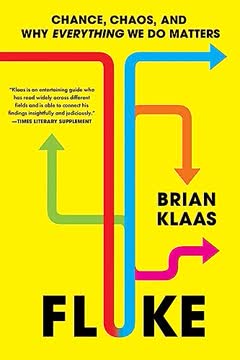
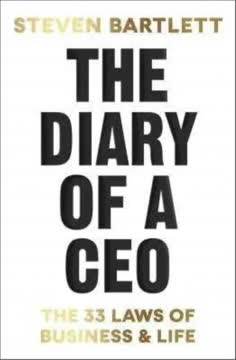



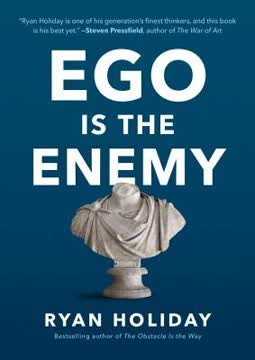
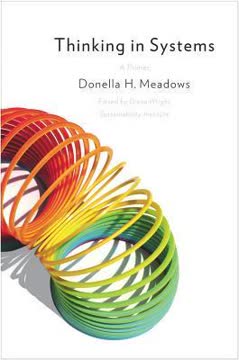

Download PDF
Download EPUB
.epub digital book format is ideal for reading ebooks on phones, tablets, and e-readers.
